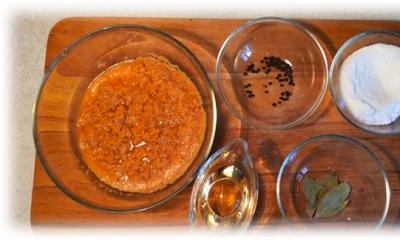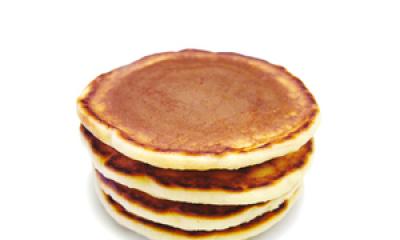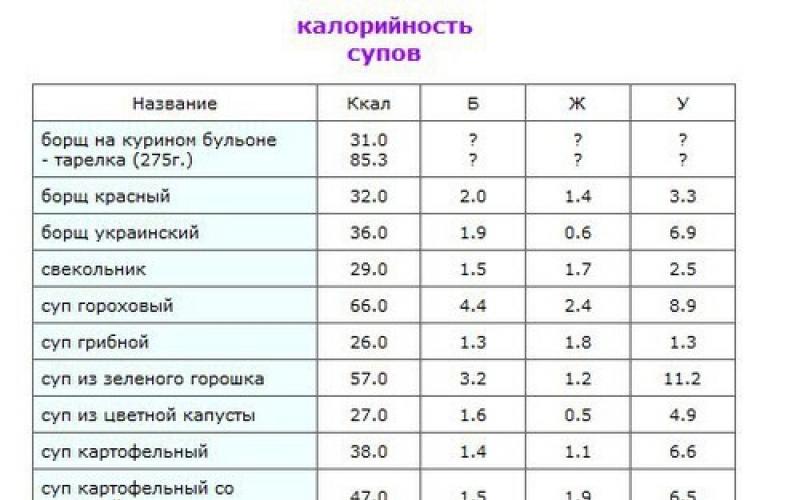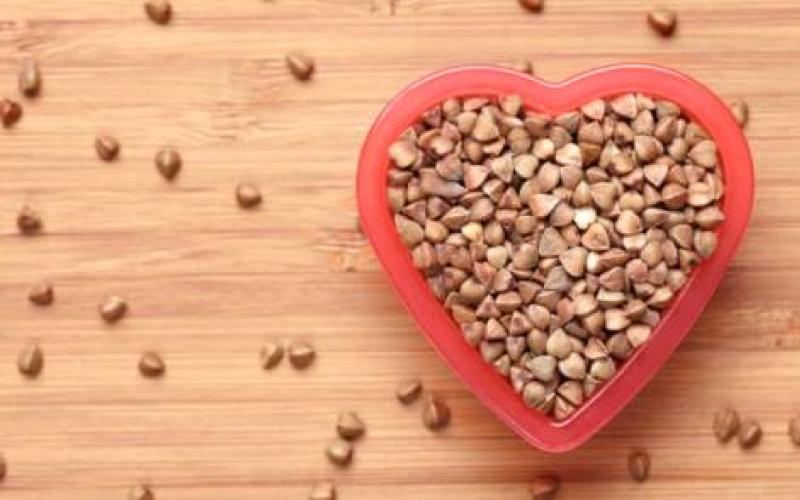Is it possible to lose weight on buckwheat with milk? Many people associate this dish with porridge, which their parents forced them to eat in childhood. But not everyone knows that buckwheat can be used to prepare very tasty, and most importantly, healthy, low-calorie dishes. There are several dozen cooking recipes that will be useful to caring mothers, those who are trying to lose weight or simply lead a healthy lifestyle. The low calorie content of buckwheat with milk and high nutritional value are the main differences of the dish.
Buckwheat porridge with milk - tasty and healthy
Buckwheat is a source of mineral elements necessary for the normal functioning of the body. Milk contains a large amount of calcium, which is good for bones. There is an opinion that such a combination can be harmful to the body. This is true, if you constantly eat such a dish, there is a risk of developing digestive problems. But such reactions are observed very rarely.
Composition and calorie content of buckwheat
The main question that worries girls and women who want to lose or maintain normal weight is: what calorie content or how many calories does buckwheat boiled with milk contain? In its raw form, it contains about 300 kcal per 100 grams. During the cooking process, buckwheat porridge increases significantly in volume. The calorie content of the finished dish depends on the fat content of the milk, as well as on additional ingredients. The benefits will be higher, as will the calorie content, if it is prepared with homemade milk. 100 grams can contain from 87 to 168 kilocalories. The composition of buckwheat porridge with milk includes the following substances:
- cellulose;
- folic acid;
- organic acids;
- mineral elements;
- vitamins.
The lowest calorie content is buckwheat cooked in water without sugar and butter. It goes well with low-fat kefir. There is even a diet that you can follow to lose weight, because its calorie content is quite low. How many kilograms? It depends on the goal and willpower.
The benefits of buckwheat are due to its composition. Buckwheat, cooked in water or milk, helps normalize blood pressure, cleanse the body of bad cholesterol, waste and toxins, and is low in calories. These products are necessary for the normal growth and development of the child's body. The benefits for adults are also obvious. 100 grams will provide the body with energy and vigor for several hours.
How to cook deliciously
As a rule, children refuse to eat buckwheat. It is associated with something monotonous and tasteless. In order for buckwheat porridge with water or milk to become one of the household’s favorite dishes, you need to know how to prepare it correctly. Boiled buckwheat with milk is tender, slightly viscous, and acquires a special taste and aroma. To cook a delicious dish, you will need the following ingredients:
- buckwheat – 1 cup (about 200 grams);
- glass of water;
- three glasses of milk;
- salt, pepper or sugar to taste;
- butter.
First, you need to pour water into the pan and bring it to a boil. How long this will take depends on the capacity. The sorted cereal should be poured into boiling water, cooked under a closed lid for 10 minutes, add spices, pour in milk, and keep on the stove over low heat until cooked. Butter is added at the very end. If you are on a diet, you can do without this ingredient. People on a diet are not recommended to indulge in buckwheat, boiled with added sugar, since 100 grams of such a dish contains about 170 thousand calories.
To diversify the recipe, you can add vegetables and fruits, meat. Buckwheat cooked with milk (or kefir) with the addition of fresh berries or fruits will be especially tasty. Children will definitely like this sweet dish due to its excellent taste. But there’s no need to talk about the benefits of fruit milk buckwheat porridge. If you are on a diet, try cooking cereal with skim milk. How many calories are in this dish? No more than 90 kcal per 100 grams. This calorie content will not allow you to gain weight.
Losing weight on buckwheat
The benefits of buckwheat porridge for the body are obvious. If you cook the cereal correctly, it can turn out to be a very tasty dish. How to lose weight on buckwheat, and is it even possible? How much porridge should you eat per day to lose a couple of kilograms? How long does such a strict, monotonous diet last?

Buckwheat will also help in the fight against excess weight
In fact, this way you can lose up to five kilograms in a week, because the diet is low in calories. Only the cereal needs to be cooked according to a special recipe, using low-fat milk. The daily diet consists of five meals:
- buckwheat with kefir;
- apple, grapefruit or other fruit;
- buckwheat porridge with kefir;
- freshly squeezed juice, fresh juice, fruit drink.
The recipe for low-calorie buckwheat is very simple. The cereal must be cooked without adding salt or sugar. Another recipe: pour boiled hot milk over raw cereal, leave to steam until it absorbs all the liquid. Portions of porridge can be anything you want. Weight loss is achieved due to the fact that all the calories contained in the dish are used to fill the body with energy. Milk cereal contains vegetable proteins, which perfectly replace vegetable fats and proteins. If you follow a diet throughout the week, you can not only lose weight, but also effectively cleanse your body of various harmful compounds.
Buckwheat porridge with milk is a healthy, nutrient-rich dish. It can be used by children and adults. Buckwheat will saturate the body with vitamins and minerals and provide it with energy for the whole day. Just don’t get carried away, because excessive consumption of the product can lead to digestive upset. Everything is good in moderation.
Buckwheat is an indispensable product for any diet. It contains a lot of useful substances (vitamins, minerals) that are beneficial to the human body: polyunsaturated fatty acids reduce the amount of cholesterol and sugar in the body, and also contains vitamins B and P, potassium, iodine, removes toxins, improves digestion, is useful for fatigue, depression.
Buckwheat is the most popular in our country for its unique properties. This cereal can be prepared in a variety of ways, as an independent dish, and as part of other dishes, including served with milk. It has excellent taste and many positive properties. It is included in the diet of adherents of a vegetarian lifestyle, as it has a rich chemical composition and can serve as an excellent replacement for some protein dishes of animal origin.
Benefit
It is worth noting that the cereal is saturated with micro and macroelements such as manganese, calcium, chromium, iron, phosphorus, copper. The composition also contains chlorine, cobalt, fluorine, zinc, selenium and boron in small quantities. The vitamin composition is represented by group B, A, PP, E. In addition, cereals are rich in amino acids, which the body needs to build muscle fiber. Folic acid, also present in buckwheat, is beneficial for pregnant women. Another component, lysine, has strong antiviral properties. Cereals also contain a lot of fiber, which helps improve digestion and normalize intestinal function. When eating cereal, a person forgets about a bad mood, feels cheerful, and gains new strength.
The second component of the dish, milk, also has a rich composition. It contains many minerals, vitamins, fatty acids, globulin, lactose. Its use helps improve the functioning of the digestive system and strengthen the body's defenses. The product will also be useful if gastric juice has high acidity. It is not recommended to include milk in the diet of persons with lactose intolerance. Use should also be limited to older people, as the product contains a component that stimulates the development of atherosclerosis. Some people may also be allergic to the product.
Buckwheat with milk is an excellent option for those who want to lose weight, as the food is rich in healthy compounds and contains few calories. The dish is very rich in essential elements, it contains a lot of proteins and fiber, but few harmful fats. Therefore, if there are no contraindications, you can eat it every day in reasonable quantities.
For those losing weight
Despite the fact that the calorie content of buckwheat with milk is quite high, it is recommended to include it in the diet when losing weight. The thing is that porridge improves metabolism and promotes rapid saturation. So, if you cook cereal in water and pour milk over it, then the calorie content of boiled buckwheat with milk and sugar per 100 g of product will be about 200 kcal.
The nutritional value
100 g of dish contains:
- calories - 155 kcal
- fats - 2.0 g
- carbohydrates - 27 g
- proteins - 7 g
If you add butter to the porridge, the nutritional value of the dish will increase to 300 kcal. Therefore, if you want to lose a little weight, then it is best to steam the cereal with boiling water, and then pour it with low-fat milk without adding butter and sugar. In this case 1 serving of this dish has a calorie content of 90-120 kcal(depending on the fat content of the milk).
The meal is an excellent solution not only for those who are losing weight, but also for everyone who strives to maintain a high level of their health. Porridge is completely absorbed by the body, so you should not be afraid that calories will be deposited somewhere. Such a breakfast will completely saturate the body and provide enough energy.
Buckwheat porridge with milk rich in vitamins and minerals such as: vitamin B1 - 28.7%, vitamin B2 - 11.1%, vitamin B6 - 20%, vitamin PP - 36%, potassium - 15.2%, silicon - 270%, magnesium - 50%, phosphorus - 37.3%, iron - 37.2%, cobalt - 31%, manganese - 78%, copper - 64%, molybdenum - 49.1%, selenium - 15.1%, zinc - 17, 1 %
Benefits of buckwheat porridge with milk
- Vitamin B1 is part of the most important enzymes of carbohydrate and energy metabolism, providing the body with energy and plastic substances, as well as the metabolism of branched amino acids. A lack of this vitamin leads to serious disorders of the nervous, digestive and cardiovascular systems.
- Vitamin B2 participates in redox reactions, helps to increase the color sensitivity of the visual analyzer and dark adaptation. Insufficient intake of vitamin B2 is accompanied by impaired condition of the skin, mucous membranes, and impaired light and twilight vision.
- Vitamin B6 participates in maintaining the immune response, processes of inhibition and excitation in the central nervous system, in the transformation of amino acids, the metabolism of tryptophan, lipids and nucleic acids, promotes the normal formation of red blood cells, maintaining normal levels of homocysteine in the blood. Insufficient intake of vitamin B6 is accompanied by decreased appetite, impaired skin condition, and the development of homocysteinemia and anemia.
- Vitamin PP participates in redox reactions of energy metabolism. Insufficient vitamin intake is accompanied by disruption of the normal condition of the skin, gastrointestinal tract and nervous system.
- Potassium is the main intracellular ion that takes part in the regulation of water, acid and electrolyte balance, participates in the processes of conducting nerve impulses and regulating pressure.
- Silicon is included as a structural component in glycosaminoglycans and stimulates collagen synthesis.
- Magnesium participates in energy metabolism, synthesis of proteins, nucleic acids, has a stabilizing effect on membranes, and is necessary to maintain homeostasis of calcium, potassium and sodium. A lack of magnesium leads to hypomagnesemia, an increased risk of developing hypertension and heart disease.
- Phosphorus takes part in many physiological processes, including energy metabolism, regulates acid-base balance, is part of phospholipids, nucleotides and nucleic acids, and is necessary for the mineralization of bones and teeth. Deficiency leads to anorexia, anemia, and rickets.
- Iron is part of proteins of various functions, including enzymes. Participates in the transport of electrons and oxygen, ensures the occurrence of redox reactions and activation of peroxidation. Insufficient consumption leads to hypochromic anemia, myoglobin deficiency atony of skeletal muscles, increased fatigue, myocardiopathy, and atrophic gastritis.
- Cobalt is part of vitamin B12. Activates enzymes of fatty acid metabolism and folic acid metabolism.
- Manganese participates in the formation of bone and connective tissue, is part of enzymes involved in the metabolism of amino acids, carbohydrates, catecholamines; necessary for the synthesis of cholesterol and nucleotides. Insufficient consumption is accompanied by slower growth, disturbances in the reproductive system, increased fragility of bone tissue, and disturbances in carbohydrate and lipid metabolism.
- Copper is part of enzymes that have redox activity and are involved in iron metabolism, stimulates the absorption of proteins and carbohydrates. Participates in the processes of providing oxygen to the tissues of the human body. Deficiency is manifested by disturbances in the formation of the cardiovascular system and skeleton, and the development of connective tissue dysplasia.
- Molybdenum is a cofactor for many enzymes that ensure the metabolism of sulfur-containing amino acids, purines and pyrimidines.
- Selenium- an essential element of the antioxidant defense system of the human body, has an immunomodulatory effect, participates in the regulation of the action of thyroid hormones. Deficiency leads to Kashin-Beck disease (osteoarthritis with multiple deformities of the joints, spine and limbs), Keshan disease (endemic myocardiopathy), and hereditary thrombasthenia.
- Zinc is part of more than 300 enzymes, participates in the processes of synthesis and breakdown of carbohydrates, proteins, fats, nucleic acids and in the regulation of the expression of a number of genes. Insufficient consumption leads to anemia, secondary immunodeficiency, liver cirrhosis, sexual dysfunction, and the presence of fetal malformations. Research in recent years has revealed the ability of high doses of zinc to disrupt the absorption of copper and thereby contribute to the development of anemia.
You can see a complete guide to the most useful products in the appendix.
buckwheat porridge with milk rich in vitamins and minerals such as: silicon - 91.5%, magnesium - 16.8%, phosphorus - 12.4%, iron - 12.4%, manganese - 26.5%, copper - 21.7%, molybdenum - 16.6%
Benefits of buckwheat porridge with milk
- Silicon is included as a structural component in glycosaminoglycans and stimulates collagen synthesis.
- Magnesium participates in energy metabolism, synthesis of proteins, nucleic acids, has a stabilizing effect on membranes, and is necessary to maintain homeostasis of calcium, potassium and sodium. A lack of magnesium leads to hypomagnesemia, an increased risk of developing hypertension and heart disease.
- Phosphorus takes part in many physiological processes, including energy metabolism, regulates acid-base balance, is part of phospholipids, nucleotides and nucleic acids, and is necessary for the mineralization of bones and teeth. Deficiency leads to anorexia, anemia, and rickets.
- Iron is part of proteins of various functions, including enzymes. Participates in the transport of electrons and oxygen, ensures the occurrence of redox reactions and activation of peroxidation. Insufficient consumption leads to hypochromic anemia, myoglobin deficiency atony of skeletal muscles, increased fatigue, myocardiopathy, and atrophic gastritis.
- Manganese participates in the formation of bone and connective tissue, is part of enzymes involved in the metabolism of amino acids, carbohydrates, catecholamines; necessary for the synthesis of cholesterol and nucleotides. Insufficient consumption is accompanied by slower growth, disturbances in the reproductive system, increased fragility of bone tissue, and disturbances in carbohydrate and lipid metabolism.
- Copper is part of enzymes that have redox activity and are involved in iron metabolism, stimulates the absorption of proteins and carbohydrates. Participates in the processes of providing oxygen to the tissues of the human body. Deficiency is manifested by disturbances in the formation of the cardiovascular system and skeleton, and the development of connective tissue dysplasia.
- Molybdenum is a cofactor for many enzymes that ensure the metabolism of sulfur-containing amino acids, purines and pyrimidines.
You can see a complete guide to the most useful products in the appendix.
Buckwheat is one of the best dietary foods. Many people classify buckwheat as a grain, but this is a mistake. It is known that buckwheat was brought from Greece.
The benefits of buckwheat are obvious, because it contains a large amount of polyunsaturated fatty acids, which reduce cholesterol levels and also affect metabolism, due to which you can achieve faster weight loss.
This occurs despite the fact that this product is high in calories.
Since buckwheat contains a large amount of flavonoids, this cereal can stop the growth of cancer and there will be no risk of thrombosis.
Buckwheat is also good for diabetics, as it regulates the amount of sugar in the blood. And folic acid, which is contained in this cereal, is very useful for pregnant women.
How many calories are in boiled buckwheat?
Scientists have calculated that 100 grams of dry buckwheat contains approximately 370 calories. Boiled buckwheat porridge contains about 150 calories, taking into account the amount of water that the cereal absorbs. It contains 5.9 gr. proteins, 1.6 gr. fats and 29 gr. carbohydrates.
How many calories are in buckwheat with water?
If you cook buckwheat in water (you get a liquid porridge), then 100 grams of such a dish will contain approximately 90 calories.
Buckwheat contains many minerals and vitamins. If you add a piece of butter to buckwheat cooked in water, the number of calories will increase significantly. Therefore, porridge with butter is not suitable for a diet.
If you add salt and oil to buckwheat in water, its calorie content will increase almost to 500 calories per 100 grams! Heat treatment does not affect the number of calories in porridge.
The buckwheat diet is beneficial for the body, as buckwheat contains many amino acids, iron, vitamins PP, and B, as well as phosphorus, calcium, iodine, and oxalic acid.
At the same time, buckwheat has an excellent taste. Therefore, it can be used for both diets and medicinal purposes. The folic acid in buckwheat strengthens blood vessels and the heart.
How many calories are in buckwheat with milk?
To prepare buckwheat with milk, it is better to take skim milk made from whole product.
You can calculate the calorie content of buckwheat porridge with milk approximately this way: 100 grams of porridge + 50 grams of milk contains 200 calories. This dish is universal and can be consumed at any time during the day. Porridge with milk improves metabolism in the body, and the body also receives proteins from it very easily. In addition, it contains a large amount of fiber, which removes toxins from the body.
Another feature of consuming buckwheat is considered to increase immunity. It also helps the liver function and improves the functioning of the gastrointestinal tract.
To prepare buckwheat with milk, use the following proportion - 100 grams of ready-made porridge should be poured with half a glass of milk.








